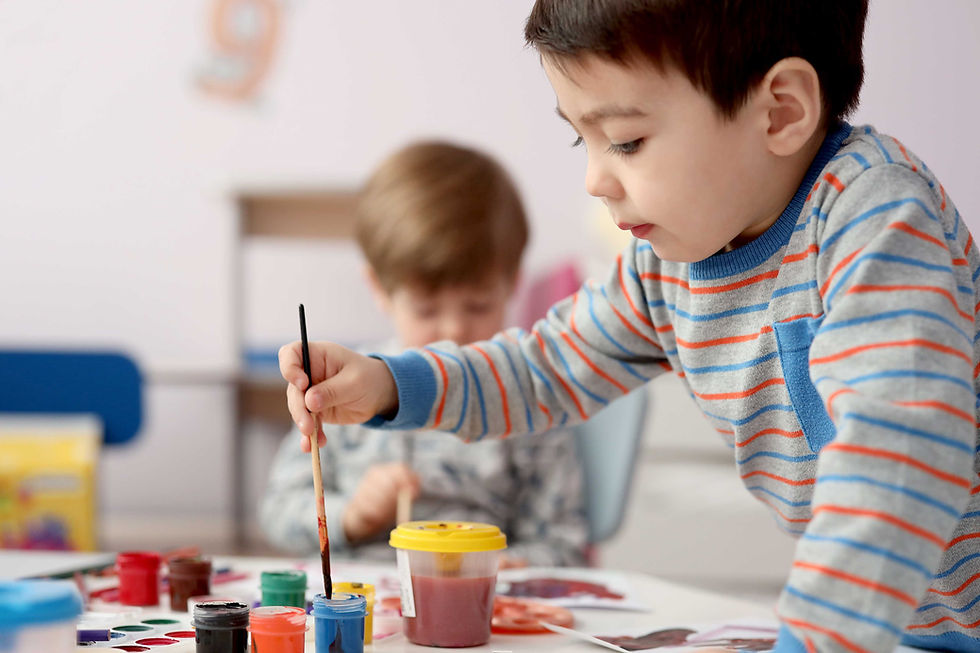Speech and Language Milestones 3–4 Years
- Genna Nichol
- May 22, 2023
- 2 min read
Updated: Sep 8, 2025
Your three- to four-year-old has mastered so much and is getting ready to start kindergarten, where they will continue to develop new skills in many areas. This article provides a list of the typical speech and language milestones most children will achieve at this age.

Play milestones:
Like to play with others (may play with 2 or 3 other children in a group)
Take turns with other children
Engage in more imaginative play beyond common or personal experiences (e.g., fireman rescuing people)
Social milestones:
Anticipate the next turn in a conversation
Engage in longer conversations
Terminate conversation
Adapt language to different listeners (i.e., simpler language when talking to very young children)
Use fillers to acknowledge another speaker (e.g., okay, yeah)
Request permission
Repair conversations when not understood and correct others
Begin using language for jokes and teasing
Infer information from a story and infer indirect meanings
Show consideration for conversational partners by commenting on or asking a question about what they have said
Speech milestones
Use p, b, m, h, w, k, g, f, t, d, n, s, y (“yuh”), “ing”, and say all vowels correctly
Are understood by parents 75-100% of the time
Use sounds at the beginning and ends of words
Expressive language milestones:
Use pronouns like I, you, me, we, they
Ask “when” and “how” questions
Put at least 4 words together
Use rhyming words (e.g., “cat” and “hat”)
Use about 4 sentences at a time to talk about something
Use irregular past tense (e.g., “went”, “fell”)
Use possessive -s (e.g., mommy’s cup)
Begin to use the verb “to be” when it is the only verb in the sentence (e.g., “I am hungry”, “they are happy”)
Begin to use articles “a” and “the” (e.g., “a book”, “the book”)
Begin to use regular past tense (e.g., “jumped”, “laughed”)
Describe activities, feelings, and problems and tells simple stories
Receptive language milestones:
Understand words for some colours (e.g., red, blue, green)
Understand words for some shapes (e.g., circle, square)
Understand words for family (e.g., brother, grandmother)
Understand longer what, where, and who questions
Follows three-part directions (i.e., go to your room, get the ball, and bring it to me)
Are able to identify a variety of descriptive words and concepts: long/short, top/bottom, same/different
Understand location words: beside, behind, under
It is important to remember these are milestones for most children at this age, but each child develops at their own rate. However, if your child has not met a significant number of these milestones or if you are concerned with your child's development, please see your family doctor who can do a thorough assessment and suggest next steps.
We offer speech and language assessments and therapy for children of all ages.
You may also be interested in:




Comments